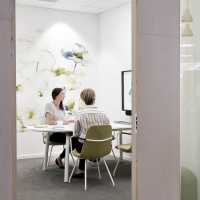To provide the best experiences, we use technologies like cookies to store and/or access device information. Consenting to these technologies will allow us to process data such as browsing behaviour or unique IDs on this site. Not consenting or withdrawing consent, may adversely affect certain features and functions.
The technical storage or access is strictly necessary for the legitimate purpose of enabling the use of a specific service explicitly requested by the subscriber or user, or for the sole purpose of carrying out the transmission of a communication over an electronic communications network.
The technical storage or access is necessary for the legitimate purpose of storing preferences that are not requested by the subscriber or user.
The technical storage or access that is used exclusively for statistical purposes.
The technical storage or access that is used exclusively for anonymous statistical purposes. Without a subpoena, voluntary compliance on the part of your Internet Service Provider, or additional records from a third party, information stored or retrieved for this purpose alone cannot usually be used to identify you.
The technical storage or access is required to create user profiles to send advertising, or to track the user on a website or across several websites for similar marketing purposes.
 Back in 2021 the Financial Action Task Force (FATF) put out a paper on the opportunities and challenges that new technologies are bringing to Anti-Money Laundering (AML) and counter-terrorist financing (CTF) efforts. If you are unaware of who the FATF is it may be worth your while to investigate farther into it. For now, though, let it be known that they are an independent inter-governmental body that defines the rules and procedures that need to be in place to prevent these two criminal activities. (more…)
Back in 2021 the Financial Action Task Force (FATF) put out a paper on the opportunities and challenges that new technologies are bringing to Anti-Money Laundering (AML) and counter-terrorist financing (CTF) efforts. If you are unaware of who the FATF is it may be worth your while to investigate farther into it. For now, though, let it be known that they are an independent inter-governmental body that defines the rules and procedures that need to be in place to prevent these two criminal activities. (more…)






 Although the term ‘metaverse’ was coined in 1992 by science fiction novelist Neal Stephenson, it has only just entered the mainstream lexicon after
Although the term ‘metaverse’ was coined in 1992 by science fiction novelist Neal Stephenson, it has only just entered the mainstream lexicon after 














 Just as businesses are starting to find their groove with
Just as businesses are starting to find their groove with 
 Microsoft’s new
Microsoft’s new 








February 21, 2022
Who watches the workplace watchmen?
by Mark Eltringham • Comment, Technology